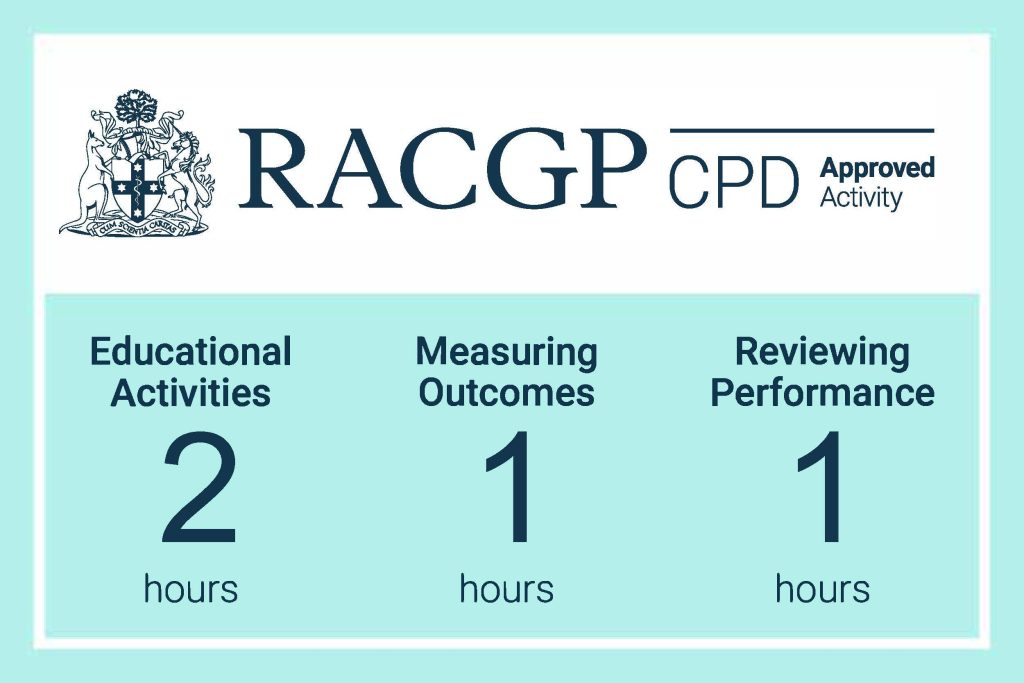Articles / Should we all be terrified of voluntary patient enrolment?

0 hours
These are activities that expand general practice knowledge, skills and attitudes, related to your scope of practice.
0 hours
These are activities that require reflection on feedback about your work.
0 hours
These are activities that use your work data to ensure quality results.
These are activities that expand general practice knowledge, skills and attitudes, related to your scope of practice.
These are activities that require reflection on feedback about your work.
These are activities that use your work data to ensure quality results.
There has been a lot of talk recently about voluntary patient enrolment with a general practice, with many warning of a slippery slope towards capitation payments and increasing government oversight.
But what does this actually mean in practice and what is all the fuss about?
As a GP who trained in the UK system and was a business partner there, but who now happily calls Australia home, I’ll try to detangle it for you.
In Australia, as we know, general practice runs on a fee for service scheme – the patient presents, a service is completed and a fee is paid. Medicare, the publicly funding insurance scheme, agrees to reimburse the patient a set fee for specific services. The GP might accept the set fee that Medicare has agreed to pay as full payment — in other words the patient is bulk-billed — or the patient might be asked to pay a gap or additional fee (the patient is privately billed).
It is widely accepted that Medicare is a complex and bureaucratic beast. All Medicare items come with an item descriptor, in essence a set of requirements that must be met for the relevant service to be billed to Medicare. These descriptors can be confusing, vague and open to misinterpretation. This can lead to accidental non-compliance, putting the health professional at risk of investigation by Medicare (and potentially being required to repay the fee). This can create a culture of fear.
In Australian primary care, the patient has control over who they ask to deliver a particular service.
Although many patients choose to have a regular GP, they don’t have to, and can visit different practices and see different practitioners. The clear upside for patients is that they have the freedom and flexibility of choice. The downsides include potential fragmentation of care and lack of a consistent medical record. Although My Health Record aimed to improve the availability of information, it is dependent upon what the patient and their treating professionals choose to upload. When a patient registers with a new GP they don’t have to declare which doctors they have previously seen. Even when a patient provides consent to obtain historical records, a practice is only obliged to provide a health summary, the quality of which, in my experience, is extremely variable.
In contrast, in the UK, patients have to register with one specific practice. Historically this was based on their home address, with practices covering specific geographical areas. This requirement was subsequently relaxed to enable patients to register at a practice convenient to them, such as near their work, but they are still only able to register with one practice at a time. All of their primary healthcare is then delivered by that practice. Patients are unable to visit other GP practices for routine care, although they can in some exceptional circumstances — for example if they develop an acute illness while on holiday in a different part of the UK.
Patients can choose to deregister at a practice and register at a practice elsewhere, but there can only be one active registration at any one time. When a patient transfers their care, for example if they move to a different area, their full medical record is automatically transferred to their new primary care provider.
As part of the contract with the National Health Service (NHS), UK general practices are required to provide services to their registered patients during core working hours. This includes the identification and management of illness. This can lead to workflow challenges, since patients are unable to simply book with another practice if all appointments on a particular day are taken and their need is urgent.
In the UK, funding for primary care is almost entirely via the NHS and is always free at the point of delivery – general practices accredited by the NHS are unable to charge private fees for routine care. The NHS decides how many medical centres are required within a specific geographical area based on population studies. It is rare for new practices to be approved, except in areas where there is a large growth in population, for example where a large new housing development is planned. Although GPs could set up an entirely private practice, patients would be unable to access any NHS services through them, such as subsidised prescriptions or public secondary care referral. Such services are therefore rare.
Like in Australia, UK general practices are usually independent businesses, often owned and operated by one or more staff within the practice, which might include doctors, nurses and non-healthcare staff, although corporate or NHS-managed practices do feature as well.
General practice funding in the UK is complex, but is based on a capitation model. In simple terms, practices receive a fixed annual fee for every patient that is registered with them. This covers all and any encounters that a specific patient has with the practice during that year. Some patients might not attend at all, whilst others might require an extensive number of visits. The idea is that it will all even out in the end.
In addition, practices can opt to offer additional services, such as the provision of minor surgery or health assessments for certain patient groups. Some of these are agreed nationally, and some are commissioned by the NHS within a local area following health needs assessments.
Opt-in services attract additional funding based on meeting certain key performance indicators. These might, for instance, include targets for the number of diabetic patients with an on target HbA1c (with the option to opt a patient out if there is a clinical reason why their HbA1c is higher). Or there might be a target for the number of asthma patients who have had a formal asthma review in the preceding 12 months. The targets have to be met in order for the practice to receive payment.
Of course, it could be argued that many of the targets reflect best clinical practice, but the process does add additional “tick boxing”. The concept is similar to the Australian Practice Incentive Program, although with much more patient-specific targets.
There are also multiple other NHS non-patient-specific funding streams— for example the NHS reimburses practices for property rent and some service costs.
The UK funding model offers certainty of income – practice populations are generally stable from year to year and despite the changing nature of the opt-in additional services, year-in, year-out income is relatively predictable.
Since income is paid to the practice, rather than to a specific doctor or health professional, the practice can deliver services in a way it chooses with freedom to innovate.
In the UK, for instance, appropriately trained practice nurses run their own clinics with little or no GP input, nurse practitioners are an integral part of most practices, and in recent years, pharmacists and paramedics are often employed as part of practice teams. This multidisciplinary approach means patients get the benefit of a team and GPs can focus on more complex patients.
As part of the recent budget, the Australian government announced MyMedicare, which provides patients with the opportunity to voluntarily enrol with a specific general practice, known as voluntary patient enrolment. The idea is this will enhance continuity of care by providing practices with more comprehensive information about their regular patients, along with access to additional funding packages.
While the UK system requires compulsory registration, MyMedicare is voluntary and will run alongside a fee for service model. The specific detail is yet to be announced, but the government has made assurances that the blended model will be in addition to and not instead of fee for service.
Still, many commentors are concerned that MyMedicare is the start of a move towards the UK system of capitation, and the beginning of the end of fee for service, with funding being increasingly attached to performance targets.
Yet both the AMA and the RACGP support voluntary patient enrolment—although they’ve taken pains to state that they don’t support capitation. They cite benefits to continuity of care and the GP-patient relationship, but say fee for service must remain at the core.
Inevitably there are pros and cons for both healthcare systems which, in many respects, have similar challenges – an ageing population, demand on services that often outstrips supply, a shortage of GPs and funding issues.
I can only speak from my own experience. The UK funding model does, in my view, allow innovation in the way services are delivered. It also promotes a practice team comprising a range of healthcare professionals, working to their full scope of practice. Patient registration helps to reduce fragmentation and duplication of care.
But although compulsory registration ensures continuity of care, it does limit choice, both for patients and GPs.
Additionally, the unpredictable workflow contributes to GP stress and burnout.
And while funding is relatively predictable, it is also relatively fixed. So if your practice demographic are higher users of services, you have to provide what they need within the allocated funding.
In Australia the fee for service model offers patients and GPs choice, and this type of funding does better reflect the workload. However, there are also drawbacks, including fragmentation and duplication of care, as well as potentially limiting innovation.
Which system do I prefer to work in? As an NHS trained GP, a part of my heart will always be in that system, but I prefer the choice and flexibility the Australian system offers. There is of course scope for improvement in many areas and much could be learnt from the UK and other healthcare systems.
A blended model seems a step in the right direction, though I suspect getting the balance right might present a challenge.
As the saying goes, the devil will be in the detail.

Menopausal Hormone Therapy - What Dose of Estrogen is Best?

Cardiovascular Benefits of GLP1s – New Evidence

Oral Contraceptive Pill in Teens

RSV and the Heart


Modified but kept in place
Eliminated entirely without replacement
Maintained as is
Completely replaced with an alternative system
Listen to expert interviews.
Click to open in a new tab
Browse the latest articles from Healthed.
Once you confirm you’ve read this article you can complete a Patient Case Review to earn 0.5 hours CPD in the Reviewing Performance (RP) category.
Select ‘Confirm & learn‘ when you have read this article in its entirety and you will be taken to begin your Patient Case Review.
Menopause and MHT
Multiple sclerosis vs antibody disease
Using SGLT2 to reduce cardiovascular death in T2D
Peripheral arterial disease
